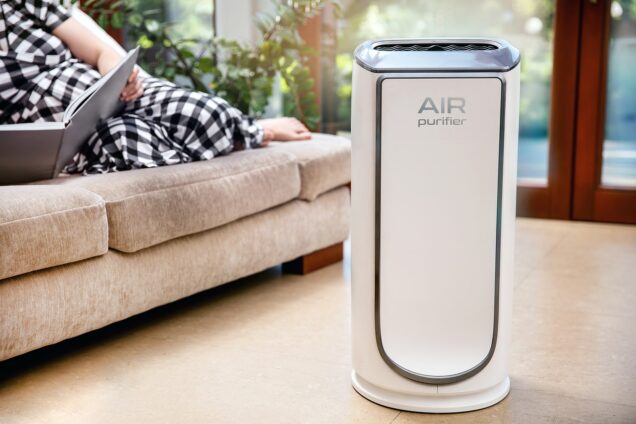Spring cleaning is a crucial step for allergy sufferers, and understanding how to choose and use air purifiers effectively can make all the difference in managing allergy symptoms. In this guide, we’ll discuss the different types of air purifiers, factors to consider when choosing one, and tips for using them to alleviate allergies.
Spring introduces more color and warmth, signaling longer days and the chance for more outdoor activities. However, for allergy sufferers, this season can also mark the beginning of a prolonged battle against sneezing, congestion, and itchy eyes.
While medication and avoiding allergens are traditional remedies, integrating air purifiers into your home can offer a breath of fresh air—literally. This post dives into how choosing and using the right air purifier can transform your indoor space into a haven from spring allergens.
Understanding Allergies and Air Quality
Before we explore the solution, it’s essential to understand the problem. Spring allergens such as pollen, mold, and pet dander find their way into our homes, clinging to clothes and pets and even circulating through our HVAC systems. These particles can significantly degrade indoor air quality, triggering allergy symptoms for many.
Poor air quality doesn’t just carry allergens; it can also harbor pollutants like volatile organic compounds (VOCs) from paints and furnishings, exacerbating respiratory issues. The correlation between indoor air quality and allergy symptoms underscores the importance of maintaining clean air within your living spaces.
The Role of Air Purifiers in Managing Allergies
Air purifiers serve as a barrier against allergens, filtering out particles and pollutants from the air in your home. They operate by drawing in dirty air, trapping allergens and irritants in filters, and circulating clean air back into the room. This process can significantly reduce your exposure to the allergens that trigger symptoms, making air purifiers a powerful ally in the fight against allergies.
Benefits of Using Air Purifiers for Allergy Management
- Reduced Allergen Exposure: By capturing a high percentage of airborne allergens, air purifiers can alleviate symptoms like sneezing, congestion, and itchy eyes.
- Improved Overall Air Quality: Beyond allergens, air purifiers also filter out pollutants and odors, contributing to a healthier living environment.
Choosing the Right Air Purifier
When selecting an air purifier, it’s crucial to consider the size of the room where it will be placed. An air purifier’s effectiveness is significantly influenced by whether it is rated for the specific dimensions of the room. This ensures that the air purifier can perform optimally, circulating and filtering the air efficiently throughout the entire space.
Another important factor to take into account is the type of filter the air purifier uses. High-efficiency particle air (HEPA) filters are widely recognized as the gold standard because they can capture a high percentage of airborne allergens. However, exploring other types of purifiers, such as those using UV or ionic technology, might be beneficial. These variants not only capture particles but can also offer additional advantages, including the ability to kill bacteria and remove odors, enhancing the air quality further.
Lastly, the noise level of the air purifier is a critical aspect to consider, particularly if you plan to use it in a bedroom or any other space where quiet is appreciated. The goal is to choose an air purifier that operates quietly enough not to disrupt sleep or daily activities. This means paying close attention to the decibel levels listed for the air purifier to ensure it blends seamlessly into the background noise of your environment.
Types of Air Purifiers and Allergen Control
- HEPA Purifiers: Ideal for removing common allergens like pollen, dust mites, and pet dander.
- UV Purifiers: Use ultraviolet light to kill bacteria and viruses but may be less effective against non-living allergens.
- Ionic Purifiers: Charge particles to remove them from the air but can produce ozone as a byproduct, which may irritate the lungs.
Using Air Purifiers Effectively
To maximize the benefits of an air purifier, placement and maintenance are key:
- Placement: Position air purifiers in areas where you spend the most time, like bedrooms or living rooms. Avoid corners and ensure the purifier has adequate space around it for unobstructed airflow.
- Maintenance: Regularly replace or clean filters according to the manufacturer’s instructions to maintain efficiency and effectiveness.
Reach Out To Our Team Starting Today
Spring need not be a season of discomfort for allergy sufferers. With the right air purifier, you can create a cleaner, healthier home environment, making it easier to enjoy the beauty of the season. Whether you opt for a HEPA, UV, or Ionic purifier, the key is choosing a device that aligns with your specific needs and using it effectively. Get in touch with our team today at 317-350-0188, and we’ll be happy to assist you in finding the perfect air purifier for your home.




